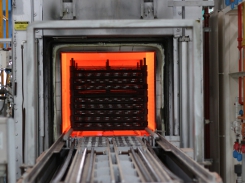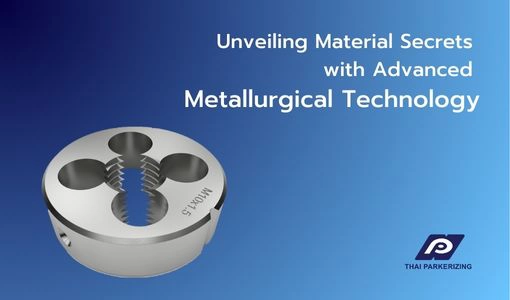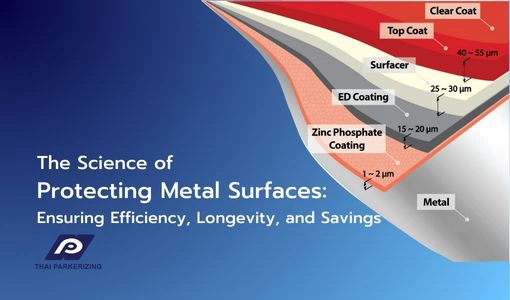- Corporate
- Chemical Products
- Chemical Controller
- Chemical for Paint Booth
- Coil Coating
- Degreasing and Cleaning chemical
- Heat&Cool exchanger (PLATECOIL)
- Hydrophilic
- Manganese Phosphate
- Nano-coating (Pallucid)
- Rolling Oil
- Rust Preventive Product
- Stearate Soap Lubricant/Dry-in-Place Lubricant (PULS)
- Trivalent Chromium/Non-Chromium
- Zinc Phosphate/Iron Phosphate
- Processing Services
- Laboratory Services
- Articles
- What's New
- Contact Us
- Privacy Policy
What is nickel plating, and what are the methods involved?
12 July 2024
In the plating industry, nickel plating is a crucial process in metal coating. Discovered over 300 years ago in 1751, nickel is a lustrous, silvery-white metal known for its toughness, strength, and malleability. These properties make it highly versatile, particularly in plating applications for metals and certain plastics. To achieve optimal results, the nickel plating process is a critical step that cannot be overlooked. This article delves into the details of what nickel plating is and the various methods involved.
- What is the process of nickel plating?
- What are the benefits and drawbacks of the nickel plating process?
- What are the different types of nickel plating processes?
- What is the difference between electroplating and electroless nickel plating?
- Factors influencing the performance of nickel plating
- Related products
What is the process of nickel plating?

Nickel plating is a process where a thin layer of nickel is electrolytically deposited onto a metal surface. This process significantly enhances the performance and properties of the base metal. There are two primary methods of nickel plating: electrolytic and electroless.
After a metal component has been formed or shaped into its desired shape, it undergoes the nickel plating process. This layer of nickel provides increased durability, corrosion resistance, and often improves the appearance of the finished product.
A wide variety of metal products can be nickel plated, including household items like rice cookers, pots, toasters, electric stoves, and cutlery. Additionally, electrical components such as plugs, TV tubes, fasteners, rechargeable batteries, and manufacturing equipment like filters, water meters, heat exchangers, and medical devices can be nickel plated. Automotive parts, engine components, aircraft parts, and even jewelry are common applications for nickel plating.
What are the benefits and drawbacks of the nickel plating process?
Since nickel plating is a process that can significantly enhance the performance of metals, it is beneficial to understand both its advantages and disadvantages to make more informed decisions.
Advantages of Nickel Plating:
Nickel-plated metals offer increased strength, corrosion resistance, rust prevention, an improved aesthetic appearance, and enhanced electrical conductivity.
Disadvantages of Nickel Plating:
The primary drawbacks of nickel plating include increased production costs and the potential for allergic reactions in individuals who are sensitive to nickel.
What are the different types of nickel plating processes?

As previously explained, nickel plating can be primarily categorized into two types: Electrolytic Nickel Plating (EP) and Electroless Nickel Plating (ELP, EN, or Kanigen). Each method has its unique characteristics and applications, as detailed below:
- Electrolytic Nickel Plating (EP)
Electrolytic nickel plating involves the use of direct current (DC) in a plating bath to induce a chemical reaction in the nickel electrolyte solution, resulting in a coating on the surface of the material. This traditional method requires careful preparation of the metal surface, precise control of the electrolyte concentration, current density, and overall current. A notable characteristic of this method is the non-uniformity of the coating thickness, with thicker layers forming at edges and corners due to higher current concentration. Conversely, the coating is thinner in internal or concave areas.
Electrolytic nickel plating can be performed using various techniques such as Watts Baths, Fluoborate, Sulphamate, All-Chloride, Sulphate-Chloride, All-Sulphate, High Sulphate, Hard Nickel, and Black Nickel, depending on the specific requirements and preferences. - Electroless Nickel Plating (ELP, EN, or Kanigen)
Electroless nickel plating, often referred to as Kanigen, does not require an external electrical current. Instead, it relies on a chemical reaction involving the transfer of electrons from a reducing agent to an oxidizing agent, resulting in the deposition of nickel onto the workpiece. This method offers several advantages, including uniform coating thickness across the entire workpiece, even in internal or concave areas. The resulting coating is hard, corrosion-resistant, and wear-resistant, making it suitable for a wide range of applications such as automotive components, electronics, agricultural equipment, textile machinery, and forming machinery.
It's worth noting that the term "Kanigen" is a registered trademark in Japan by Nihon Parkerizing Co., Ltd. For high-quality electroless nickel plating services and expert advice, Thai Parkerizing is a recommended provider.
What is the difference between electroplating and electroless nickel plating?
To provide a clear distinction between electroplating and electroless nickel plating, let's compare the two processes in detail:
1. Properties Obtained
Electroless nickel plating offers superior properties such as hardness, wear resistance, extended service life, excellent electrical conductivity, and a uniform coating even on complex or intricate surfaces. It also provides a bright, attractive finish and is compatible with various base metals.
2. Plating Process
While the initial steps of both processes may be similar, the following is a general overview:
- Surface preparation: The workpiece is cleaned and any defects or rust are repaired.
- Cleaning: The surface is cleaned to remove grease and contaminants by immersing it in appropriate cleaning solutions followed by rinsing with clean water.
- Electrolytic cleaning: The workpiece is immersed in an electrolytic bath to remove any remaining contaminants that were not removed by the initial cleaning.
- Activation: The surface is activated to promote adhesion of the plating.
- Plating: For electroplating, the workpiece is immersed in a plating bath containing a direct current. For electroless nickel plating, there is no external current; the plating reaction occurs spontaneously.
- Rinsing: The workpiece is rinsed with clean water.
3. Benefits and Applications
Both electroplating and electroless nickel plating offer corrosion resistance, improved wear resistance, and enhanced electrical conductivity. These properties make them suitable for a wide range of applications, including electronic components, automotive parts, machinery components, and aerospace components. However, electroless nickel plating offers superior adhesion, hardness, and fewer pores in the coating.
4. Advantages and Disadvantages
Electroless nickel plating generally provides a higher quality finish compared to electroplating, offering better durability and uniformity. However, it requires more precise control and expertise. If you require further assistance or have specific questions, please don't hesitate to contact us.
Factors influencing the performance of nickel plating

- Surface preparation is crucial. If the workpiece is not adequately cleaned or has imperfections, these will often be replicated in the nickel plating, resulting in an unsatisfactory finish.
- Excessive current density (in electroplating) or inconsistent plating bath temperature can affect the smoothness of the coating.
- Prolonged plating time can lead to excessive coating thickness and a rough finish.
- The skill and experience of the operator significantly impact the quality of the nickel plating process.
Nickel plating is a critical process that enhances a material's corrosion resistance, prevents rust, improves wear resistance, enhances electrical conductivity, and improves aesthetics. Electroless nickel plating offers superior performance compared to electroplating, albeit at a higher cost. For those seeking electroless or immersion nickel plating services, Thai Parkerizing is a leading expert. We also provide other services such as rustproofing, heat treatment, and related chemical products. As a pioneer in surface coating technology in Thailand, we guarantee international standards.









